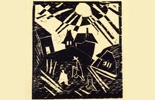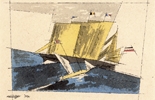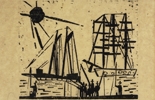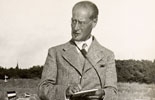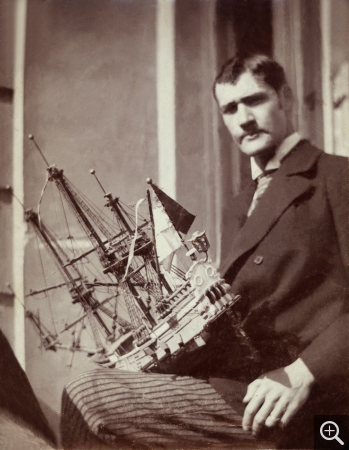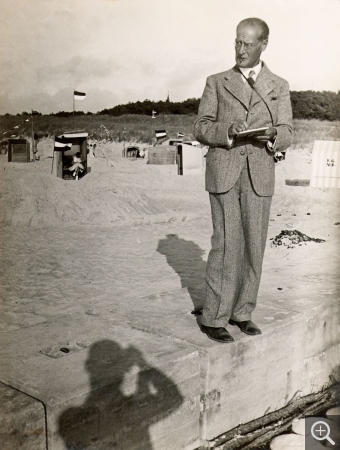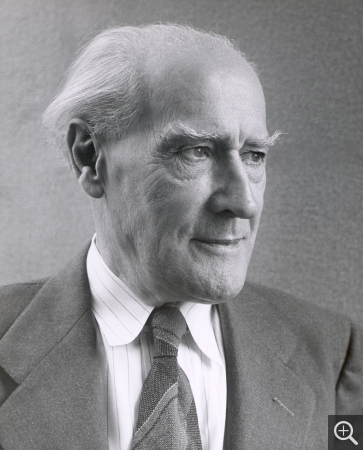Lyonel Feininger, l'arpenteur du monde
from April 18 to August 31, 2015
Lyonel Feininger (New York, 1871–New York, 1956)
1871 | July 17, Lyonel Charles Feininger is born in New York to a family of German-American musicians.
1887 | October, he travels to Germany with the intention of studying the violin, but ends up enrolling at the Kunstgewerbeschule applied arts school in Hamburg.
1888 | Feininger studies at the Akademie der Künste (Prussian Academy of Arts) in Berlin for two years.
1892 | November, he rents a studio in Paris at 9 rue Campagne-Première in Montparnasse and attends the Académie Colarossi.
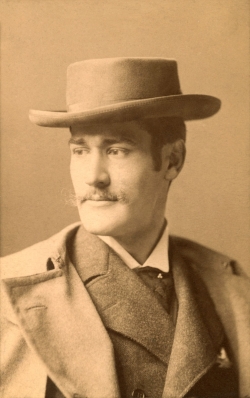 1893 | He returns to Berlin to pursue a career as a caricaturist. In the years that follow, he works for several satirical magazines such as the American weekly Harper’s Young People and German publications like Ulk and Die lustingen Blätter. By the turn of the century, he is one of the most prominent illustrators in Berlin.
1893 | He returns to Berlin to pursue a career as a caricaturist. In the years that follow, he works for several satirical magazines such as the American weekly Harper’s Young People and German publications like Ulk and Die lustingen Blätter. By the turn of the century, he is one of the most prominent illustrators in Berlin.
1905-1906 | He meets Julia, who is to become his second wife and studying graphic arts at the Weimar Saxon-Grand Ducal Art School (Bauhaus). He joins her the following year in Weimar and, on her advice, produces his first lithographs and etchings. In July, the couple moves to Paris and Feininger resumes his study at the Académie Colarossi. He begins working as a caricaturist for the French weekly of political satire Le Témoin and continues until the magazine stops production in 1910. Travels to Normandy in late summer. 1907 | Feininger frequents the Café du Dôme, a favourite meeting place of German artists and students of Matisse, where he forms friendships with Jules Pascin, Richard Götz, Hans Hoffmann and German avant-garde artists like Oskar Moll, Rudolf Levy and Hans Purrmann.
In April, he completes his first painting, a still life, soon followed by urban scenes of Paris. The paintings of Van Gogh and Cézanne at the Bernheim-Jeune gallery leave a strong mark on him.
1910 | Contributes a painting for the first time to the annual exhibition of the Berlin Secessionists, of which he is a member (Longueil, Normandy). He ceases to work as a caricaturist.
1911 | Brief sojourn in Paris where he exhibits 6 paintings at the Salon des Indépendants. This is where he discovers Cubism.
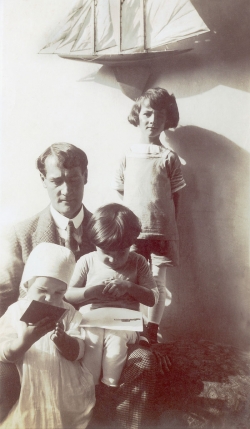 1912 | Feininger once again exhibits 3 paintings at the Salon des Indépendants in Paris.
1912 | Feininger once again exhibits 3 paintings at the Salon des Indépendants in Paris.
He encounters the Die Brücke painters and forms close ties with Erick Heckel and Karl Schmidt-Rottluff.
He befriends Alfred Kubin, a member of the Expressionist group Blaue Reiter.
1913 | Feininger sojourns in Weimar, where he visits the villages and boroughs of Thuringia and draws inspiration for numerous motifs (Gelmeroda, Mellingen, Vollersroda, etc.). Franz Marc, who co-founded the Blaue Reiter with Kandinsky, invites him to exhibit 5 paintings at the first German fall salon (Erster Deutscher Herbstsalon) organized by the Der Sturm gallery in Berlin. In June, he leaves the Berlin Secessionists. He designs wooden model trains and locomotives for a toy factory, but the outbreak of war brings the project to a halt. 1914 | July 28, start of the First World War. Feininger and his family return to Berlin.
1917 | April, the United States enter the war. First solo exhibition at the Der Sturm gallery in Berlin (45 paintings and 66 works on paper). November, beginning of the Russian Revolution.
1918 | First wood cuts. November 11, the armistice is signed: end of the First World War.
![Lyonel FEININGER (1871-1956), Cathedral [large plate], 1919, woodcut, 30.8 x 19.1 cm. Frontispice du programme du Staatliches Bauhaus Weimar, 1919. Collection particulière. © Maurice Aeschimann — © ADAGP, Paris, 2015 Lyonel FEININGER (1871-1956), Cathedral [large plate], 1919, woodcut, 30.8 x 19.1 cm. Frontispice du programme du Staatliches Bauhaus Weimar, 1919. Collection particulière. © Maurice Aeschimann — © ADAGP, Paris, 2015](https://www.muma-lehavre.fr/sites/default/files/styles/w250/public/thumbnails/image/bd_feininger_14.jpg?itok=YRtdnABU) 1919 | January, the Spartacist uprising ends in failure. Beginning of the Weimar Republic. Weimar becomes the federal capital of Germany. In April, Feininger joins the Arbeitsrat für Kunst (Workers Council for Art).
1919 | January, the Spartacist uprising ends in failure. Beginning of the Weimar Republic. Weimar becomes the federal capital of Germany. In April, Feininger joins the Arbeitsrat für Kunst (Workers Council for Art).
April, creation in Weimar of the Bauhaus, a state art school founded as a merger of the Hochschule für bildende Künste (Academy of Fine Arts) and the Kunstgewerbeschule (School of Applied Arts). The director, Walter Gropius, hires the first three professors ("form masters": Johannes Itten, Gerhard Marcks and Lyonel Feininger.
Feininger illustrates the cover of the Bauhaus manifesto with a woodcut, Cathedral of Socialism.
1920 | First solo exhibition in a German museum in Erfurt.
Oskar Schlemmer, Georg Muche and Paul Klee are appointed Bauhaus form masters.
1921 | The Bauhaus printing and graphics workshop creates the first portfolio by Feininger, a collection of 12 woodcuts. The Detroit Institute of Arts purchases one of his paintings, and Feininger is appointed head of the Bauhaus printing and graphics department following the departure of Walther Klemm. He oversees the publication of solo portfolios of prints by Wassily Kandinsky (Kleine Welten/Small Worlds), Oskar Schlemmer, Georg Muche and Gerhard Marks, 4 collective portfolios (Bauhaus masters), as well as a collection on "New European Graphics". At the same time, he also composes his first fugue for piano.
1924 | On the initiative of art dealer Galka Scheyer, Feininger, Paul Klee, Alexej Jawlensky and Wassily Kandinsky form Die Blaue Vier (The Blue Four) with the aim of exhibiting in the United States. Feininger spends his first summer in Deep, a fishing village on the Baltic coast, where he would return with his family every summer for the next twelve years.
1925 | Closing of the Bauhaus in Weimar following political change in the Thuringia parliament and the rise of the National Socialist Party. The teachers decide to transfer the school to Dessau. The Feiningers follow shortly thereafter.
1926 | They move into one of the master houses built by Walter Gropius, which they share with László and Lucia Moholy-Nagy. Feininger asks to be relieved of his teaching responsibilities, but remains at the Bauhaus as artist-in-residence at Gropius's request.
A portfolio of his 10 woodcuts is published in Berlin.
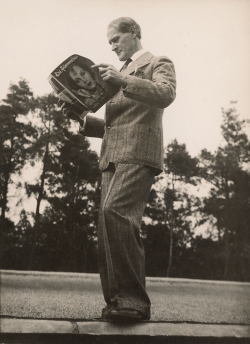 1929-1931 | On the initiative of the director of the local museum, the municipal council of Halle, a small city in north-eastern Germany, commissions a painting of the city from Feininger. He is provided with studio space in the museum, where he produces 12 paintings.
1929-1931 | On the initiative of the director of the local museum, the municipal council of Halle, a small city in north-eastern Germany, commissions a painting of the city from Feininger. He is provided with studio space in the museum, where he produces 12 paintings.
1931 | Feininger travels to Paris and Brittany, before spending the summer in Deep. The Berlin Nationalgalerie organizes a retrospective of his work for his sixtieth birthday.
1932 | September, the municipal council of Dessau, now in the hands of the National Socialist Party, moves to close the Bauhaus. The school pursues its activity in Berlin. 1933 | January 30, Adolf Hitler becomes Chancellor of Germany. The Nazis permanently close the Bauhaus in April. The works of Feininger and other modern artists are declared "degenerate art". The Feiningers now share their time between Berlin and Deep.
1936 | Feininger is invited by Alfred Neumeyer to teach during the summer at Mills College in Oakland, California. Feininger has his first exhibition in the United States before returning to Berlin.
1937 | New invitation from Mills College. The Feiningers permanently leave Germany, like many German artists and intellectuals before them, and particularly those from the Bauhaus such as Klee, Gropius, Kandinsky and Moholy-Nagy.
1938 | The couple live at 235 East 22nd Street in New York. Feininger is commissioned for a first mural for the Maritime Transport Building at the 1939 New York World's Fair.
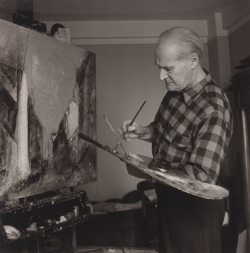 1939 | Beginning of the Second World War. Feininger produces a second mural for the Masterpieces of Art Building at the World's Fair. He takes up painting again, revisiting his oeuvre (woodcuts) and drawing from his memories of Germany and particularly images of the Baltic Sea.
1939 | Beginning of the Second World War. Feininger produces a second mural for the Masterpieces of Art Building at the World's Fair. He takes up painting again, revisiting his oeuvre (woodcuts) and drawing from his memories of Germany and particularly images of the Baltic Sea.
1944 | First major retrospective of his work in the United States (jointly with Marsden Hartley), at the Museum of Modern Art in New York. It travels to ten major American cities. 1956 | Lyonel Feininger dies on January 13 in New York.
1887 | October, he travels to Germany with the intention of studying the violin, but ends up enrolling at the Kunstgewerbeschule applied arts school in Hamburg.
1888 | Feininger studies at the Akademie der Künste (Prussian Academy of Arts) in Berlin for two years.
1892 | November, he rents a studio in Paris at 9 rue Campagne-Première in Montparnasse and attends the Académie Colarossi.

Loescher & Petsch, Lyonel Feininger with hat, Berlin, ca. 1894, photography. The Lyonel Feininger Project LLC, New York – Berlin
1905-1906 | He meets Julia, who is to become his second wife and studying graphic arts at the Weimar Saxon-Grand Ducal Art School (Bauhaus). He joins her the following year in Weimar and, on her advice, produces his first lithographs and etchings. In July, the couple moves to Paris and Feininger resumes his study at the Académie Colarossi. He begins working as a caricaturist for the French weekly of political satire Le Témoin and continues until the magazine stops production in 1910. Travels to Normandy in late summer.
In April, he completes his first painting, a still life, soon followed by urban scenes of Paris. The paintings of Van Gogh and Cézanne at the Bernheim-Jeune gallery leave a strong mark on him.
1910 | Contributes a painting for the first time to the annual exhibition of the Berlin Secessionists, of which he is a member (Longueil, Normandy). He ceases to work as a caricaturist.
1911 | Brief sojourn in Paris where he exhibits 6 paintings at the Salon des Indépendants. This is where he discovers Cubism.

Anonyme, Lyonel Feininger with three of his children, ca. 1912, photography. The Lyonel Feininger Project LLC, New York – Berlin
He encounters the Die Brücke painters and forms close ties with Erick Heckel and Karl Schmidt-Rottluff.
He befriends Alfred Kubin, a member of the Expressionist group Blaue Reiter.
1913 | Feininger sojourns in Weimar, where he visits the villages and boroughs of Thuringia and draws inspiration for numerous motifs (Gelmeroda, Mellingen, Vollersroda, etc.). Franz Marc, who co-founded the Blaue Reiter with Kandinsky, invites him to exhibit 5 paintings at the first German fall salon (Erster Deutscher Herbstsalon) organized by the Der Sturm gallery in Berlin. In June, he leaves the Berlin Secessionists. He designs wooden model trains and locomotives for a toy factory, but the outbreak of war brings the project to a halt.
1917 | April, the United States enter the war. First solo exhibition at the Der Sturm gallery in Berlin (45 paintings and 66 works on paper). November, beginning of the Russian Revolution.
1918 | First wood cuts. November 11, the armistice is signed: end of the First World War.
![Lyonel FEININGER (1871-1956), Cathedral [large plate], 1919, woodcut, 30.8 x 19.1 cm. Frontispice du programme du Staatliches Bauhaus Weimar, 1919. Collection particulière. © Maurice Aeschimann — © ADAGP, Paris, 2015 Lyonel FEININGER (1871-1956), Cathedral [large plate], 1919, woodcut, 30.8 x 19.1 cm. Frontispice du programme du Staatliches Bauhaus Weimar, 1919. Collection particulière. © Maurice Aeschimann — © ADAGP, Paris, 2015](https://www.muma-lehavre.fr/sites/default/files/styles/w250/public/thumbnails/image/bd_feininger_14.jpg?itok=YRtdnABU)
Lyonel FEININGER (1871-1956), Cathedral [large plate], 1919, woodcut, 30.8 x 19.1 cm. Frontispice du programme du Staatliches Bauhaus Weimar, 1919. Collection particulière. © Maurice Aeschimann — © ADAGP, Paris, 2015
April, creation in Weimar of the Bauhaus, a state art school founded as a merger of the Hochschule für bildende Künste (Academy of Fine Arts) and the Kunstgewerbeschule (School of Applied Arts). The director, Walter Gropius, hires the first three professors ("form masters": Johannes Itten, Gerhard Marcks and Lyonel Feininger.
Feininger illustrates the cover of the Bauhaus manifesto with a woodcut, Cathedral of Socialism.
1920 | First solo exhibition in a German museum in Erfurt.
Oskar Schlemmer, Georg Muche and Paul Klee are appointed Bauhaus form masters.
1921 | The Bauhaus printing and graphics workshop creates the first portfolio by Feininger, a collection of 12 woodcuts. The Detroit Institute of Arts purchases one of his paintings, and Feininger is appointed head of the Bauhaus printing and graphics department following the departure of Walther Klemm. He oversees the publication of solo portfolios of prints by Wassily Kandinsky (Kleine Welten/Small Worlds), Oskar Schlemmer, Georg Muche and Gerhard Marks, 4 collective portfolios (Bauhaus masters), as well as a collection on "New European Graphics". At the same time, he also composes his first fugue for piano.
1924 | On the initiative of art dealer Galka Scheyer, Feininger, Paul Klee, Alexej Jawlensky and Wassily Kandinsky form Die Blaue Vier (The Blue Four) with the aim of exhibiting in the United States. Feininger spends his first summer in Deep, a fishing village on the Baltic coast, where he would return with his family every summer for the next twelve years.
1925 | Closing of the Bauhaus in Weimar following political change in the Thuringia parliament and the rise of the National Socialist Party. The teachers decide to transfer the school to Dessau. The Feiningers follow shortly thereafter.
1926 | They move into one of the master houses built by Walter Gropius, which they share with László and Lucia Moholy-Nagy. Feininger asks to be relieved of his teaching responsibilities, but remains at the Bauhaus as artist-in-residence at Gropius's request.
A portfolio of his 10 woodcuts is published in Berlin.

Anonyme, Lyonel Feininger on the Roof of his Studio, Dessau, 1930, photography. The Lyonel Feininger Project LLC, New York – Berlin
1931 | Feininger travels to Paris and Brittany, before spending the summer in Deep. The Berlin Nationalgalerie organizes a retrospective of his work for his sixtieth birthday.
1932 | September, the municipal council of Dessau, now in the hands of the National Socialist Party, moves to close the Bauhaus. The school pursues its activity in Berlin.
1936 | Feininger is invited by Alfred Neumeyer to teach during the summer at Mills College in Oakland, California. Feininger has his first exhibition in the United States before returning to Berlin.
1937 | New invitation from Mills College. The Feiningers permanently leave Germany, like many German artists and intellectuals before them, and particularly those from the Bauhaus such as Klee, Gropius, Kandinsky and Moholy-Nagy.
1938 | The couple live at 235 East 22nd Street in New York. Feininger is commissioned for a first mural for the Maritime Transport Building at the 1939 New York World's Fair.

Joseph BREITENBACH (1896-1984), Lyonel Feininger, ca. 1943, photography. The Lyonel Feininger Project LLC, New York – Berlin
1944 | First major retrospective of his work in the United States (jointly with Marsden Hartley), at the Museum of Modern Art in New York. It travels to ten major American cities.



- Anonyme, Lyonel Feininger with brig, ca. 1896, photography. The Lyonel Feininger Project LLC, New York – Berlin
- T. Lux FEININGER (1910-2011), Lyonel Feininger sketching, Deep, ca. 1932, photography. The Lyonel Feininger Project LLC, New York – Berlin
- Anonyme, Lyonel Feininger, ca. 1950, photography. The Lyonel Feininger Project LLC, New York – Berlin


